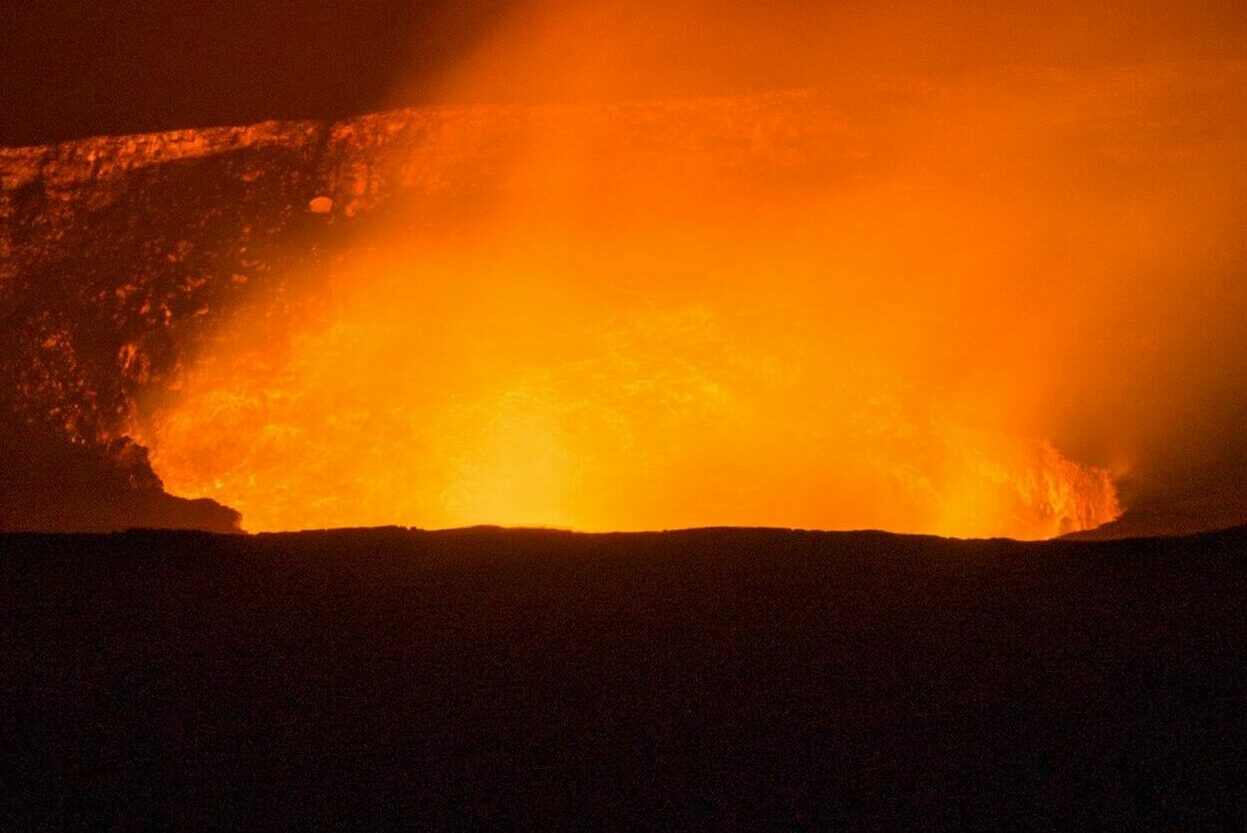Hawaii Lava tubes are a rare geological formation only seen on The Big Island. Tube-shaped caves like these are formed when molten lava flows through an underground conduit and then cools and solidifies. Exploring the island’s volcanic past and present through these lava tubes is a thrilling and one-of-a-kind experience.
Several Big Island lava tubes, such as Kazumura Cave, Thurston Lava Tube, and the Lava Tree State Monument, are accessible to the general public. Over 40 miles in length, Kazumura Cave is the longest lava tube in the world and is accessible to trained cave explorers. Exploring a subterranean environment shaped by volcanic activity, like this lava tube, is an opportunity unlike any other. Kazumura Cave is a great place to go if you’re in the mood for an exciting hike with a worthwhile payoff.
One of the most visited spots in Hawaii Volcanoes National Park is Thurston Lava Tube, commonly known as Nahuku. This Hawaii lava tube is well-lit and has a paved route, making its exploration simple despite its length (about 800 feet). If you’re looking to explore a lava tube but don’t have the time or equipment for a more strenuous trip, this is the one for you. The short and simple climb to Thurston Lava Tube makes it a fantastic option for families with young children.
Those interested in exploring a lava tube on their own should head to the Puna region, where the Lava Tree State Monument can be found. With its well-lit, paved trail and a length of roughly 100 feet, this lava tube is a breeze to explore. The Lava Trees, a peculiar geological formation created by a volcanic eruption in 1790, are also located in the Lava Tree State Monument. As the lava cooled and hardened, a cast of the tree trunks was left in the lava. For the first time, tourists may witness firsthand the dramatic effects of volcanic activity on the terrain.
It’s best to be well-prepared before venturing into a lava tube. The lava tunnels can be dark and slippery, so visitors should wear sturdy, closed-toe shoes and carry a lantern or headlamp. Lava tube temperatures are typically lower than surface temperatures, thus visitors are advised to dress in layers. Also, guests are advised to carry a towel in case they become wet while exploring the lava tubes. Water is also essential, as the humidity levels inside the lava tubes can rise to uncomfortable levels.
Visitors should be aware that the lava tubes are a delicate ecosystem and act accordingly. To protect the fragile ecosystem, visitors must follow the prescribed trails and not touch or remove anything from the tubes. It’s important for tourists to know that certain lava tunnels have low ceilings, uneven floors, and confined places.
To sum up, the Big Island of Hawaii is home to various interesting lava tubes that allow tourists to learn more about the island’s geological and volcanic past. It’s crucial to have the right gear and treat lava tubes with respect before venturing inside. Visitors are advised to wear closed-toe, durable shoes, carry a lantern or headlamp, a light jacket or sweater, a towel, and plenty of drink. Visitors should be prepared for the lava tunnels to be damp, dark, slippery, and otherwise hazardous due to their low ceilings, uneven surfaces, and confined quarters. Travelers should stick to the trails set up for them in the lava tubes so as not to disturb the delicate ecosystem that lives there. The lava tubes are a fascinating and unusual way to learn about the geology and history of the Big Island’s volcano. You can see firsthand how volcanic eruptions can dramatically alter the terrain.








